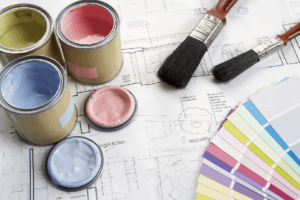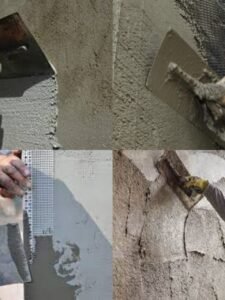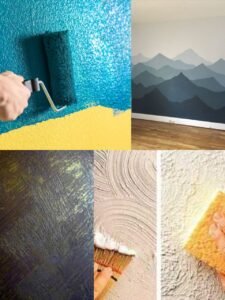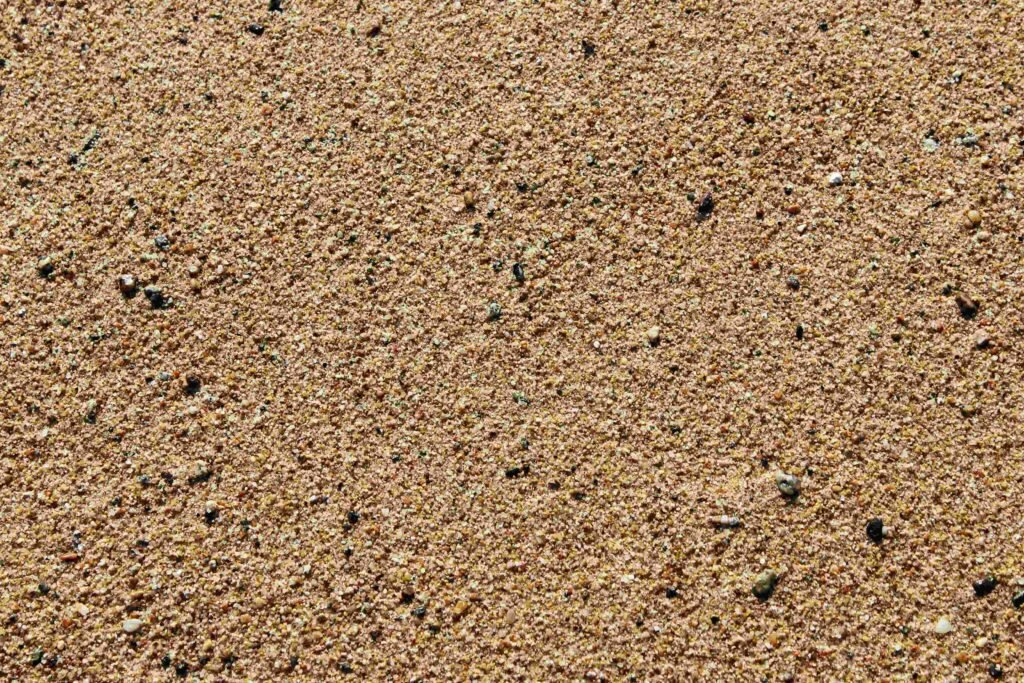Introduction to Wall Textures
Wall textures play a significant role in the realm of interior design, contributing not only to the aesthetic appeal of a space but also to its overall atmosphere. The importance of textured walls cannot be overstated; they serve as a dynamic element that transforms flat surfaces into engaging features. By incorporating various textures, homeowners and designers can enhance visual interest, create focal points, and impart a sense of depth and dimension to a room.
Textured walls can take many forms, including but not limited to, stucco, brick, wood paneling, and various paint techniques. Each texture carries its unique character and can evoke different feelings, adding layers to the overall design narrative. For instance, a rough stone finish may impart a rustic charm, while a sleek, smooth texture can lend a contemporary and polished look. The choice of texture often reflects personal style and can harmonize with the surrounding decor, thereby creating a cohesive environment.
This blog post aims to explore innovative wall texture ideas that cater to various design styles and preferences. From the practical benefits of textured walls, such as camouflaging imperfections and improving acoustics, to their aesthetic bonus of making a space more inviting and lively, there is much to consider. Whether you are renovating a room or simply refreshing your decor, the introduction of texture can lead to a profound transformation. In the following sections, we’ll delve into more specific ideas and techniques that can integrate seamlessly into your home, enabling you to express your individuality and enhance the character of your living spaces.
Benefits of Textured Walls
Incorporating textured walls into home decor offers several advantages that can significantly enhance both the aesthetic and functional aspects of a space. One of the primary benefits is the improvement of acoustics within a room. Textured surfaces can absorb sound waves, reducing echo and making environments more comfortable, particularly in spaces such as living rooms, home theaters, or offices. This feature is particularly beneficial in larger rooms where sound can easily bounce off flat surfaces, creating an unpleasant auditory experience.
Another advantage of textured walls is their ability to disguise imperfections. Walls often bear the brunt of wear and tear, resulting in small dents, scratches, or uneven surfaces. Textured finishes can effectively mask these flaws, providing a visually appealing backdrop without the need for extensive repair work. Furthermore, the varied surface of a textured wall can add depth and character to otherwise plain areas, transforming an ordinary wall into a focal point within a room.
Textured walls also enhance visual interest and contribute to a dynamic atmosphere. The play of light on irregular surfaces can create enchanting shadows and highlights, further elevating the ambiance of a space. This quality is particularly advantageous in rooms that receive ample natural light, where the interplay between light and texture can bring an inviting and warm feel to the environment. By incorporating textured walls, homeowners can instill a sense of uniqueness in their decor, differentiating their space from conventional flat surfaces commonly found in most homes.
In conclusion, textured walls offer notable benefits that extend beyond mere aesthetics. From improved acoustics and concealing imperfections to enhancing visual interest and light reflection, these features can significantly elevate the overall design and functionality of any space.

Trending Wall Texture Designs
The world of interior design is constantly evolving, and wall textures are no exception. Currently, several trends are making waves in the realm of wall aesthetics, showcasing a variety of patterns, finishes, and color combinations that cater to different styles and preferences. One notable trend is the use of geometric patterns. These designs often incorporate sharp lines and bold shapes that create a striking visual impact. From chevrons to hexagons, geometric wall textures offer a contemporary feel that resonates well with modern spaces.
Another exciting trend is faux finishes, which simulate more expensive materials like marble, wood, or concrete. This approach not only enhances the visual appeal of walls but also provides a practical solution for homeowners looking to achieve a luxurious appearance without the associated costs. Techniques such as sponge painting or venetian plaster are gaining popularity, giving walls depth and character while remaining budget-friendly.
Natural textures have also captured the attention of design enthusiasts. Materials like reclaimed wood, stone, and textured plaster create an organic feel that brings warmth and authenticity to interiors. These designs not only enhance the aesthetic but also connect occupants with nature, promoting well-being in the living space. Moreover, the blend of earthy tones and soft hues in natural textures fosters a calming ambiance, making them ideal for relaxation areas.
Moreover, innovative color combinations are emerging as a way to accentuate wall textures. Current trends lean towards muted palettes paired with bold accents to create a balanced look. Soft pastels juxtaposed with striking deeper hues can transform an otherwise simple wall into a statement piece. These trending wall texture designs not only enhance the beauty of a space but also play an essential role in modern interior design by providing layers of interest and enhancing overall visual harmony.

Materials Used for Texturing Walls
Texturing walls is a popular method of enhancing interior spaces, and the selection of materials plays a crucial role in achieving the desired effect. Traditional options such as plaster and wood have been utilized for centuries, while modern alternatives like wallpaper, fabric, and 3D panels are gaining ground due to their versatility and aesthetic appeal.
Plaster is a classic material that provides a beautiful, smooth finish. It can be applied with different techniques to achieve various textures, such as stucco or knockdown. The durability of plaster makes it an excellent choice for both residential and commercial spaces. However, its application can be labor-intensive and may require professional installation.
Wood is another traditional material known for its warmth and character. Wood paneling can create a rustic or contemporary look, depending on the design. While versatile, wood can be susceptible to moisture, requiring protective finishes to prevent warping or decay. Combining wood with other materials, like paint or wallpaper, can create unique and innovative textures.
In contrast, wallpaper has evolved significantly and now comes in various patterns, textures, and colors. Textured wallpapers can add depth and interest to a room without the mess associated with traditional materials. However, the lifespan of wallpaper may be shorter than other options, as it can be prone to peeling or fading over time.
Fabric is another modern material that offers a distinct texture. Soft wall coverings, made from textiles, can enhance acoustic properties while adding a touch of luxury to the environment. The main drawback is that fabric may require additional maintenance to keep it looking fresh.
Lastly, 3D panels have emerged as a dynamic option for wall texturing. These panels, often made from materials like PVC or wood, can create dramatic effects that transform any space. Their installation can be straightforward, yet the cost may be higher than more traditional methods.
By understanding the pros and cons of each material, homeowners and designers can effectively combine different types to create innovative and personalized wall textures that reflect individual tastes and styles.

Creative Techniques for Texturing Walls
Texturing walls can significantly elevate the aesthetic appeal of any space, transforming a flat surface into a visually engaging focal point. Various techniques used by both DIY enthusiasts and professional designers can be easily integrated into home improvement projects, allowing individuals to customize their living environments. One popular method is sponging, which involves using a sponge to apply paint over a base coat. This technique creates a soft, cloud-like texture suitable for bedrooms or living rooms. By selecting contrasting colors, homeowners can achieve a unique blend that enhances the overall ambiance of a room.
Stenciling is another creative approach that adds intricate patterns and designs to walls. This technique allows for endless customization, as stencils can be purchased or created to match personal preferences. By applying paint through the stencil, one can create elaborate motifs, whether it be a simple border or an entire mural. Stenciling is particularly effective in smaller areas such as accent walls or as a decorative element in children’s rooms.
For a more substantial texture, utilizing tools like trowels can produce a striking effect. Techniques such as knockdown or skip trowel involve applying joint compound or plaster to walls using a trowel and then flattening the surface to create unique patterns. These methods not only provide depth to walls but also offer durability, making them suitable for spaces that experience more wear and tear.
Each technique can be tailored to fit the desired look, whether a subtle sheen or a more pronounced texture is sought. Understanding these methods empowers homeowners to embark on their wall texturing projects confidently. With the right approach and materials, anyone can achieve a beautifully textured wall that breathes new life into their living space.
How to Choose the Right Texture for Your Space
Selecting the ideal wall texture for your space is a crucial aspect of interior design that can significantly affect the overall ambiance and feel of a room. First and foremost, consider the room’s purpose. For instance, textures that promote relaxation, such as smooth, matte finishes, may be more suitable for bedrooms, while bolder, more dynamic textures could enhance creativity in spaces like offices or playrooms. Understanding the specific needs of each room will guide you in making informed choices.
Another important factor is the size of the room. Larger spaces can accommodate more pronounced textures without feeling overwhelmed, while smaller areas benefit from softer textures that create an illusion of spaciousness. Incorporating lighter colors with gentle textures can also help open up smaller rooms, making them feel airy and inviting. Pay attention to the existing decor as well; blending textures with the current furnishings and accessories can lead to a harmonious and cohesive design.
Light plays a significant role in showcasing wall textures. Natural light can enhance the perceived depth of textures, while artificial light can cast shadows that highlight certain features. Evaluate how much natural light your room receives throughout the day and consider using textured paints or wallpapers that interact constructively with this light. Color schemes should also be considered, as certain colors can elevate or diminish the impact of textures. Warm colors paired with rich textures can create a cozy vibe, whereas cooler tones combined with sleek textures may foster a more modern atmosphere.
Lastly, don’t forget to incorporate your personal style into your choices. Experimenting with various textures, such as smooth, rough, or patterned finishes, can result in strikingly unique designs that reflect your personality. Blending different textures can add interest without compromising cohesiveness, making your space truly one-of-a-kind. Ultimately, the right wall texture will enhance your space while catering to the various factors mentioned above.

Tips for Maintaining Textured Walls
Maintaining the aesthetic appeal and longevity of textured walls is essential for preserving the atmosphere of your space. Regular cleaning is a crucial first step in the maintenance process. Start by using a soft, dry cloth or a feather duster to gently remove dust and debris. For more stubborn stains, a damp cloth may be employed, but ensure that it does not drench the wall, as excessive moisture can damage certain textures. It’s advisable to test any cleaning solution on a small, inconspicuous area first to prevent any adverse reactions.
When it comes to repairing damages, textured walls can be susceptible to minor issues such as dents or scrapes. For small damages, an easy solution is to use a texture patching spray that mimics the original surface. If the texture is more complex, a DIY approach can be employed using a putty knife and a compound that matches the wall. Once the compound has dried, it can be sanded for a smooth finish and painted over, ensuring a seamless repair.
Additionally, it is important to refresh or repaint textured walls periodically. Generally, the lifespan of most wall textures can be extended significantly with proper care. Consider repainting every five to seven years, or sooner if the texture appears faded or chipped. It’s essential to choose high-quality paint designed for textured surfaces to maintain not only the appearance but also the protective quality of the wall. This approach ensures that the intricate patterns and depth of the textures remain vibrant and visually appealing.
In summary, by implementing consistent cleaning practices, promptly addressing repairs, and refreshing your textured walls as needed, you can greatly enhance their durability and maintain the inviting charm they bring to your living space.

Conclusion: Elevate Your Space with Textured Walls
Incorporating textured walls into your interior design can significantly enhance the overall appearance and feel of your living spaces. Through distinctive wall textures, such as stucco, wood paneling, or even fabric applications, you can create a unique backdrop that adds depth and character to any room. Textured walls invite a tactile experience and can effectively set the mood, whether you aim for a rustic charm or a sleek modernity.
The various ideas explored throughout this blog post showcase how creatively employing textures can breathe new life into both mundane and exceptional environments. From innovative use of wallpaper with raised patterns to the natural elegance of stone finishes, options abound for those looking to revitalize their interiors. Such enhancements not only elevate aesthetic appeal but also contribute to the auditory and emotional ambiance of a space, rounding out the sensory experience.
Moreover, the personalization of textured walls allows you to express your style and preferences, making your home a true reflection of your identity. Whether opting for bold splashes of color or subtle undertones, the arrangement of textures provides numerous opportunities for customization. As you contemplate the insights shared in this article, consider how you can leverage textured wall ideas to suit your vision. Ultimately, textured walls are not merely decorations; they are transformative elements that infuse personality and warmth into any setting.
By adopting these creative wall texture strategies, you can elevate your space to new heights, ensuring that it remains not only visually stunning but also uniquely yours. Embrace the potential of textured walls and let your creativity flourish as you undertake this rewarding design journey.


